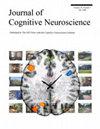The Spiraling Cognitive–Emotional Brain: Combinatorial, Reciprocal, and Reentrant Macro-organization
IF 3.1
3区 医学
Q2 NEUROSCIENCES
引用次数: 0
Abstract
This article proposes a framework for understanding the macro-scale organization of anatomical pathways in the mammalian brain. The architecture supports flexible behavioral decisions across a spectrum of spatiotemporal scales. The proposal emphasizes the combinatorial, reciprocal, and reentrant connectivity—called CRR neuroarchitecture—between cortical, BG, thalamic, amygdala, hypothalamic, and brainstem circuits. Thalamic nuclei, especially midline/intralaminar nuclei, are proposed to act as hubs routing the flow of signals between noncortical areas and pFC. The hypothalamus also participates in multiregion circuits via its connections with cortex and thalamus. At slower timescales, long-range behaviors integrate signals across levels of the neuroaxis. At fast timescales, parallel engagement of pathways allows urgent behaviors while retaining flexibility. Overall, the proposed architecture enables context-dependent, adaptive behaviors spanning proximate to distant spatiotemporal scales. The framework promotes an integrative perspective and a distributed, heterarchical view of brain function.螺旋上升的认知-情感大脑:组合、互惠和回溯的宏观组织。
本文提出了一个理解哺乳动物大脑解剖通路宏观组织的框架。该架构支持跨时空尺度的灵活行为决策。该建议强调了大脑皮层、BG、丘脑、杏仁核、下丘脑和脑干回路之间的组合、互惠和往复连接,即所谓的CRR神经架构。丘脑核,尤其是中线/椎板内核,被认为是非皮层区域和前脑功能区之间信号流的枢纽。下丘脑也通过与大脑皮层和丘脑的连接参与多区域回路。在较慢的时间尺度上,长程行为会整合神经轴各层次的信号。在快速时间尺度上,通路的并行参与允许紧急行为,同时保持灵活性。总体而言,所提出的架构能够实现从近距离到远距离时空尺度上的环境依赖性适应行为。该框架提倡从整合的角度和分布式、异构的视角来看待大脑功能。
本文章由计算机程序翻译,如有差异,请以英文原文为准。
求助全文
约1分钟内获得全文
求助全文
来源期刊
CiteScore
5.30
自引率
3.10%
发文量
151
审稿时长
3-8 weeks
期刊介绍:
Journal of Cognitive Neuroscience investigates brain–behavior interaction and promotes lively interchange among the mind sciences.

 求助内容:
求助内容: 应助结果提醒方式:
应助结果提醒方式:


